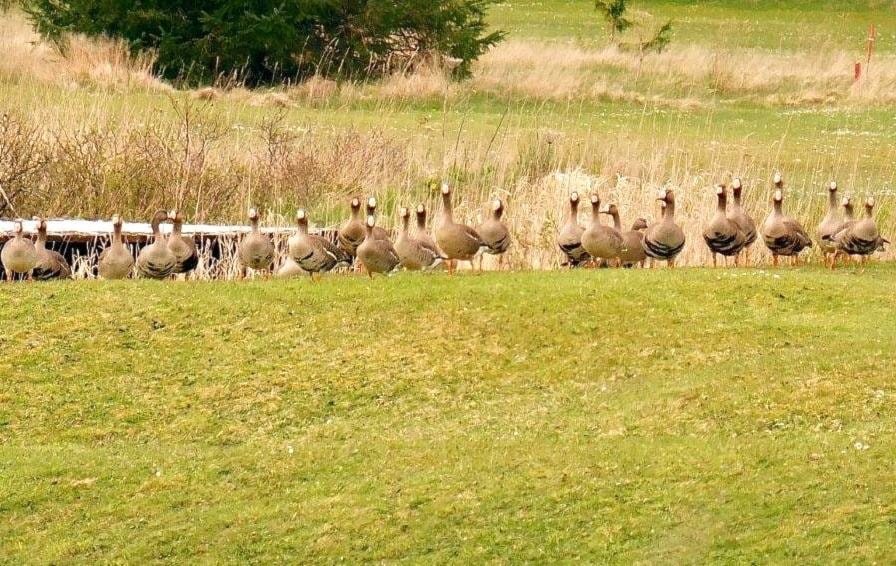By Margo Hearne
The little brown geese are everywhere. At first there were about 2,000 feeding in the sanctuary, and then they moved into town to graze on the green grass. They are smaller than the Canada Geese and have a high, haunting call. They are often called “speckle-bellies” and “yellow-legs,” but they are White-fronted Geese on their way to the tundra.
When approached, even from a distance, they all stand upright and directly face the disturbance. If you are the disturber it can be a little comical to see all these strange geese faces looking at you. But they are quite lovely and it’s a pleasure to see them grazing in the playing field in the centre of town. It’s as though a piece of the sky has landed for a little while.
White-fronted Geese are special birds. They winter from central California and Mexico, way down there in the subtropics, then travel the Pacific Flyway to get to the Yukon-Kuskokwim Delta and Bristol Bay — all the way across the Aleutian chain on the Bering Sea and past Juneau, Cordova, and Anchorage. It’s quite a ways and, depending on weather conditions, their journey can be considerably delayed, which is why they are feeding in our lawns and gardens right now. The ice is slowly coming off the northern tundra and is not quite ready to receive them.
It’s exciting to think that the White-fronted Geese have been travelling the same corridor for millennia and, so long as the habitat remains fairly intact, they will continue to do so. Recent news that the Arctic ice is melting is not a good sign for all the wildlife that nest in the near Arctic. For one thing, all that tundra, all those lakes and rivers, will be a little too accessible for “developers” and, if the permafrost goes completely, much of it will be underwater. That marvellous habitat, with its phenomenal life, will slowly disappear.
Speaking of bird protection, the word from the big country south of us is not positive. The Migratory Bird Treaty Act (MBTA) was ratified by the U.S. Senate in 1918 and launched a century of enlightenment in wildlife conservation. But it’s now being tinkered with by the boys and girls at the White House. If the changes are approved, they will free whole industries from legal liability even if their actions result in predictable, avoidable, and massive killing of birds. Any changes to the act will affect birds here, too. There are strong voices opposed to any changes to the MBTA.
An interesting mixed flock of ducks appeared in Delkatla Wildlife Sanctuary on Wednesday afternoon. They fed and paddled together in the shallow channel waters. Pintail, Green-winged Teal, Mallard, Gadwall, Northern Shovelers and American Wigeon, and, unusually, three Blue-winged Teal were there — the first we’ve seen all spring. The male birds have half-moon marks on their face and everyone feeds together as the tide rises. It’s calm out there at the moment.
